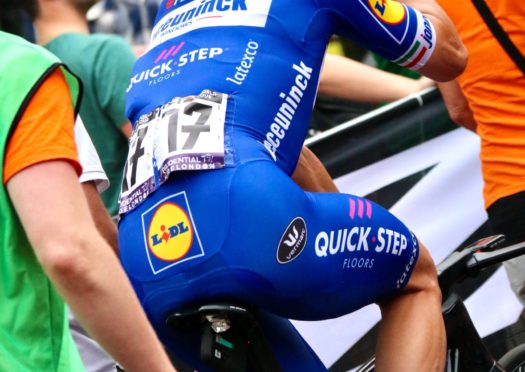Of the three main contact points your body has on a bicycle – feet, hands and derrière – it is your bottom that is perhaps the most important.
It will take around 60% of the weight of your body and your comfort here can make or break a ride.
For short rides it is not such an issue, but the thought of a sore backside can put many people off cycling in the first place, so getting the right information before you ride can make a huge difference. For longer bike rides, it is essential.
Poor hygiene and badly fitted shorts can cause huge problems. I once was guiding on a trip in the Dolomites where one rider experienced saddle sores so bad, he spent five days riding standing up and ended up in hospital on his return home.
Other factors like the height of your saddle and the type of saddle you use will make a large difference to your comfort, but most of the problems I see – and when you spend your summer guiding riders in hot countries you see a lot – are down to hygiene and shorts.
The padded insert in cycling shorts is called a chamois. At the dawn of time, it used to be an unpadded insert of leather taken from the hide of a chamois deer.
Riders used creams to keep the leather supple. Now, we have access to padding made from foam, designed to alleviate pressures in your nether regions.
I always ‘brief’ riders at the start of a six-day tour about what I call “chamois-time”, that is, the time you spend in your cycling shorts.
Coming down for breakfast in your kit, spending a full day riding, then sitting down for a beer before showering is just inviting that harmful bacteria to break down your skin.
Step forward chamois cream, the cyclist’s weapon against bacteria – or is it? Many companies make this cream, which, as mentioned above, was to moisturise leather. Now they contain anti-bacterial properties to fight infection and reduce friction.
The problem is that many riders use too much of it, often several applications of big dolloped handfuls, turning the inside of their shorts into a squelchy, damp, gloop that will increase friction and generally do more harm than good.
Your saddle, shorts and bike fit should all be comfortable enough that you can ride easily for an hour without chamois cream and, if you do need to apply it, it should be used sparingly and rubbed in properly at the points of contact that may chafe.
Beware, however, of trying to cut costs by using a petroleum based jelly instead of dedicated chamois cream. It won’t wash out properly and can ruin the anti-microbial properties, and trap bacteria in the shorts.
Another mistake many riders who are starting out in cycling make (and a few more seasoned riders) is wearing underwear under their shorts. Saddle sores and discomfort are caused by pressure and friction, and wearing underwear increases those factors.
So going commando will avoid the chafing and humid conditions that bacteria enjoys so much. For the same reason, it is worth investing in good quality bike shorts made from good materials that let your skin breathe and fit without moving around and causing that dreaded friction.
Better quality shorts are also likely to have had a lot of research in making a chamois insert that fits anatomically for male and female fits, making your riding more comfortable.
Saddle sores and discomfort on a bike are all avoidable. With a bit of planning and knowledge you can increase your comfort and enjoy longer days in the saddle.
Where to ride: The Cairn o’Mount Challenge
When: Sunday May 30
Distance: 30 miles beginner route, 80 mile challenge route
Description: A friendly cycling challenge that takes in the mighty climb of Cairn o’Mount
Enter at: cairnomountchallenge.org.uk/










